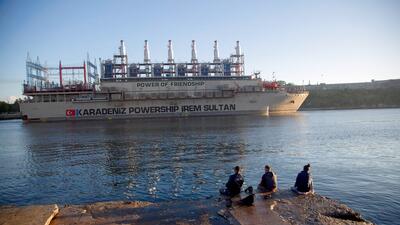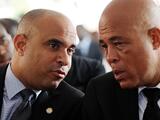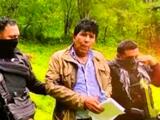"911 emergency": Cuba's energy infrastructure is in ruins and the government calls for urgent help

Two massive floating ‘power ships’ in the bay of Havana have come to symbolize in recent months the dramatic economic crisis facing the country.
The Turkish-owned ships operate as mobile power stations and, together with four others floating off the island's coast, now provide 20% of Cuba’s electricity production. They were contracted to bolster its own aged and failing thermo-electric plants, one of which stands barely a stone’s throw away near the port, its giant smokestack towering over Old Havana.
With the communist-controlled country plagued by hours-long daily blackouts as well as a transportation fuel shortage, Cuban president Miguel Díaz-Canel returned last week from a four-country international trip seeking urgent support for the country’s crippled economy.
It was no surprise then that besides stops in Russia and China, Diaz-Canel also visited Turkey, as well as oil-rich Algeria. “I call it the 911 phone call list. Cuba has an emergency,” said Jorge Pinon, a Cuban-born energy expert at the University of Texas at Austin.
While he was well-received in each place and signed several public agreements, analysts question how far they will go to resolving the island’s energy shortage, as well as a host of other scarce food items such as salt and bread.
“He didn’t pull anything out of his hat,” said Pinon. “The problem is structural. The electricity power system is broken and you can’t fix it with band-aids,” he added, referring to the island’s poorly maintained and outdated thermo-electric plants which require an expensive investment to be upgraded, or replaced.
The Cuban government has acknowledged the problem and accused U.S. sanctions, which were tightened under former President Donald Trump, of causing the shortages which have sparked rare street protests.
Diaz-Canel's four-country foreign trip
Díaz-Canel began his visit abroad last Wednesday in Algeria, where he negotiated support for the Cuban energy sector, including an undetermined amount of oil purchase and the donation of a solar power plant.
In Moscow, Díaz-Canel met with Russian President Vladimir Putin where the two unveiled a monument to Fidel Castro. According to official reports Díaz-Canel asserted that “Russia can always count on Cuba” and condemned U.S. sanctions against Moscow. To be sure, while the U.S. embargo does not account for all of Cuba’s problems, it does critically hurt its ability to obtain financial assistance from major international lenders, as well as spare parts for its oil refineries and electricity plants.
Cuba's allies no longer so generous
Until its collapse in 1991, the former Soviet Union offered Cuba a vital lifeline of imports including oil which it exchanged for sugar. But Cuba’s sugar industry is at an all-time low and trade between the two countries has fallen to a fraction of what it once was. For the past two decades Venezuela provided oil to Cuba, but it too has fallen on hard times, with its oil production down 80% since 2000.
Hence, in the absence of a major benefactor, Diaz-Canel embarked on his trip looking to patch together a financial aid coalition. But that is easier said than done in today’s world. Cuba no longer has the towering figure of Fidel Castro, who died in 2016, to conjure up international solidarity.
And then there are the debts Castro left behind. Cuba has not reported its foreign debt since 2019 when it stood at $19.6 billion.
In 2014, Putin forgave 90% of Cuba’s debt, while the remaining $3 billion was refinanced. To help his country’s old ally, Putin last week offered to refinance it again.
China also agreed to restructure Cuban debt and provide new trade and investment credits after a meeting in Peking between the leaders of the two Communist countries. China also donated $100 million to help the country cope with its current economic crisis, while also agreeing to help complete a couple of wind power and solar energy projects.
Pressure on Cuba to make economic reforms
But China’s generosity has its limits and has shown little enthusiasm in investing in Cuba while it fails to make deep economic reforms and resists moving to China’s more dynamic state-run capitalist model.
After the meeting, Diaz-Canel admitted as much to the state media traveling with him. The Cuban president said the Chinese leader, Xi Jinping, had "warned" him that in order to expand its cooperation with Cuba he would be looking at “how we take advantage of opportunities, how we are efficient, how we do not waste resources, and how we achieve adequate returns on investments.”
The problem Cuba faces, say experts, is that its strict, state-controlled, economic system is too inefficient to generate the financial incentives that investors require to assure them they will get their money back. “The Algerians gave them something but no one else is in a real carefree attitude to help the Cubans,” said John Kavulich, president of the U.S.-Cuba Trade and Economic Council. “The problem for them is Cuba owes people too much money,” he added.
In the past, Cuba was able to appeal to solidarity from the like-minded allies, but in today’s post-covid world of high inflation, there is less free money. Meanwhile Cuba’s communist leadership is still reticent to abandon its economic system.
“When you owe people money they'll work with you if they see that you're working to help them. But in Cuba's case, their attitude is we owe you this money and we don't want to make any changes that would help us pay you back. So, we want you to continue to suffer along with us. And that that isn't a great marketing strategy,” said Kavulich.
On his latest foreign trip, Diaz-Canel visited Turkey twice, at the start and end of his journey. Experts say that’s because he was trying to figure out how to pay for the power ships in the bay of
Havana for which Cuba already owes an estimated $90 million.
How to pay for the Turkish powerships?
The modern powerships are floating generators fueled by oil or gas and are able to connect to the local electricity grid. The owner of the ships, a Turkish company called Karpowership, began operating in Cuba in June 2019, and extended its contract last year to include six ships. But experts question how Cuba can pay for the expensive ships. The estimated value of the contract is at least $20 million a month.
“If Karpowership towed all of their vessels back to Turkey, the lights would go out in most of Cuba,” said Kavulich.
Karpowership did not immediatey respond to a request for comment.
Cuba’s Energy Minister promised the Cuban people in August that the apagones would be over by the end of the year, which now looks highly unlikely.
Cuba’s land-based energy system relies on a combination of inefficient oil-fired plants, as well as hundreds of smaller generators and a tiny proportion – about 5% - from alternative energy sources.
In 2014, Cuba announced a goal of 24% of its electriity from renewable sources by 2030. Cuba has several utility-scale renewable energy projects including plans to install 700 mw of photovoltaic farms by 2030, as well as 300 mw from five biomass plants located at sugar mills and three wind farms totaling another 125 mw. But those projects are all either behind schedule or have run into funding issues.
Relacionados
The Obama effect in Cuba: has anything changed?
US-Cuba relations frozen after Obama's visit
For decades the Cuban government has called on its people to resist all manner of economic hardship, but the situation today is the worst it's been in 30 years. Cuba has tried loosening up its economic controls in the past when it has faced economic problems, most recently during a brief period of warming relations with the United States under president Barack Obama. That led to a mini-boom in Cuba’s small private sector businesses, including restaurants and small family-run bed and breakfasts - Airbnb’s - some U.S. investments in hotels, airlines and cruise ships.
But Cuba pulled back after Obama made a historic visit to the island in March 2016. Then many U.S. sanctions were reimposed by President Donald Trump after he took office in 2017. The covid outbreak subsequently decimated Cuba’s tourist industry for two years, which is now struggling to recover.
Over the last year, Cuba has shown some signs of willingness to loosen its economic restrictions as a way to climb out of its latest crisis.
But many Cubans have given up hope of the system ever changing. In the last year more than 225,000 Cubans have abandoned the country, selling all their belongings to pay for $4,000 charter flights to Nicaragua from where they hike or take buses to the U.S. border.
“They are tolerating the private sector but they are doing the last amount to keep things going. They are dragging their feet
“My fear is, they're tolerating the private sector, but they don't like it. They're just doing the least amount to keep things going,” said Kavulich.



